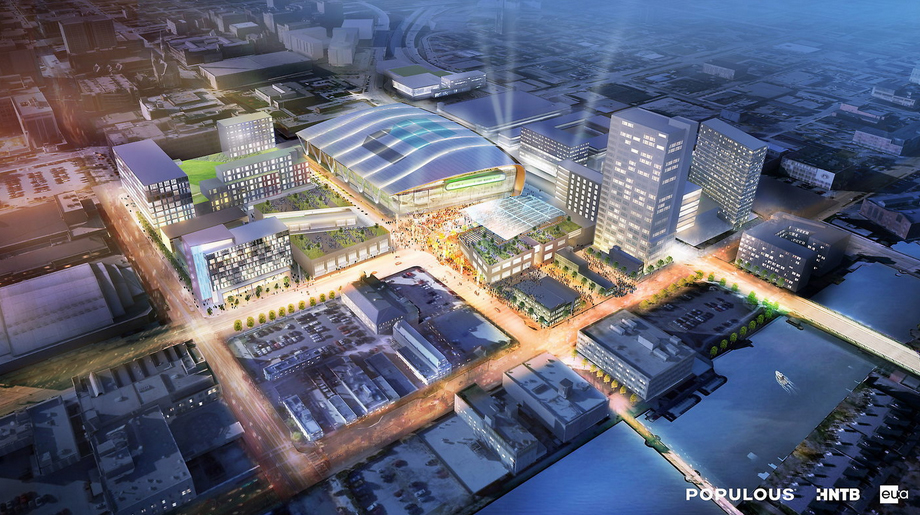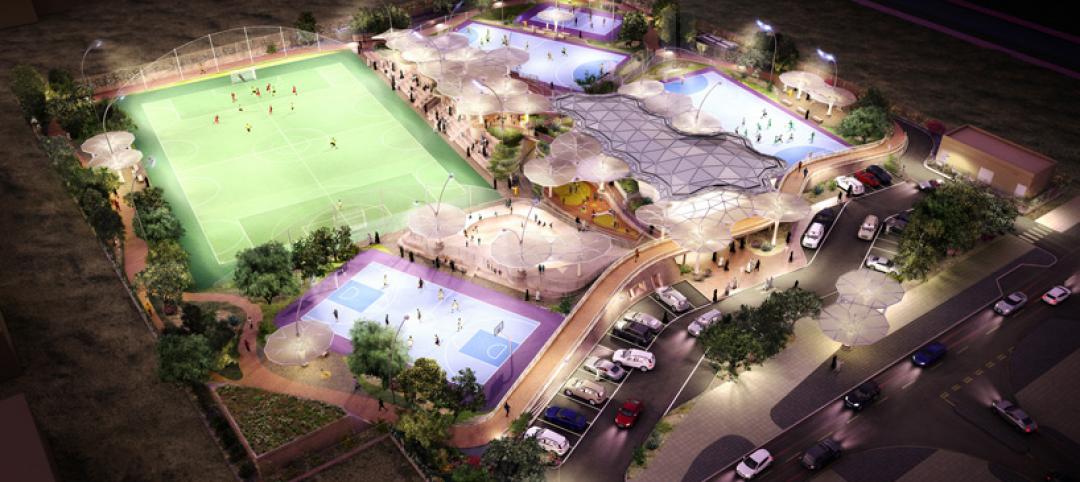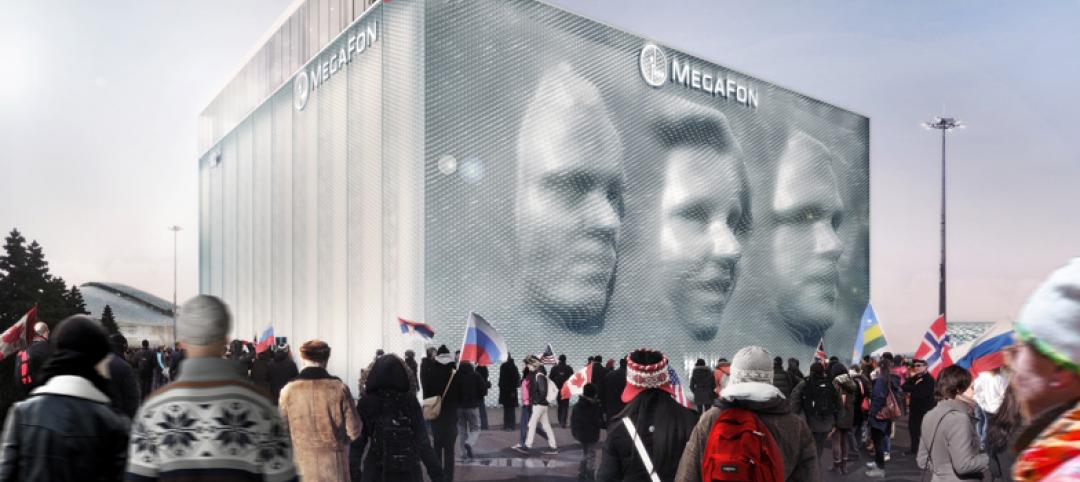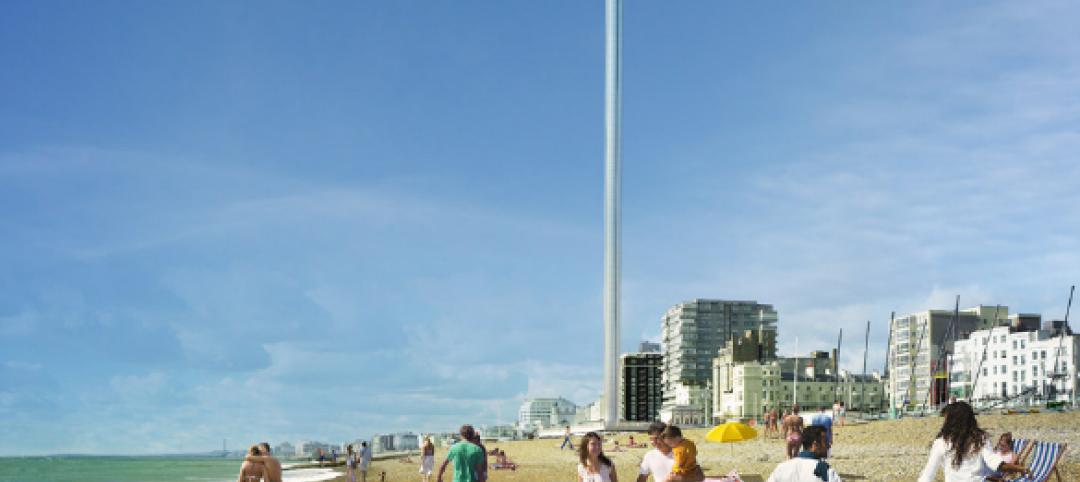The Milwaukee Bucks are one step closer to remaining in Wisconsin after the state voted this week in favor of spending $250 million in public funds on a new arena, according to ESPN.
BD+C has covered the proposed arena. Created by Milwaukee firm Eppstein Uhen Architects and global firm Populous, the venue will be built in downtown Milwaukee. Its design draws inspiration from both Lake Michigan, which borders Milwaukee, and from aspects of basketball, like high-arcing free throws. It is estimated to cost $500 million.
Funding a new arena has been an issue for the small market NBA team. Billionaires Wesley Edens and Marc Lasry purchased the Bucks in 2014 with the vow of keeping the team in the city. The NBA, however, said that the Bucks would need a new arena plan in place by 2017. Without a deal, the league would buy back the team and re-sell it, possibly to owners who would relocate it to either Seattle or Las Vegas.
Residents that opposed the arena plan cited the problems that arise when the government financially supports private sports entities, and referenced Miller Park. The Milwaukee Brewers' retractable roof stadium was publicly funded. Built in the late 1990s, it is still being paid off today.
The upside to a new arena is that the state still gets to recieve income tax from players and staff, and that the venue could bring new development, like entertainment and commercial spaces, residential buildings and parking facilities, to the area around the stadium. Most importantly, the state gets to keep the franchise that won the 1971 NBA Finals and currently has up-and-coming players like Jabari Parker and Giannis Antetokounmpo (and head coach Jason Kidd) on the roster.
The bill now heads to Governor Scott Walker for his signature. Walker has been working with state officials to reach a deal and is expected to sign it.
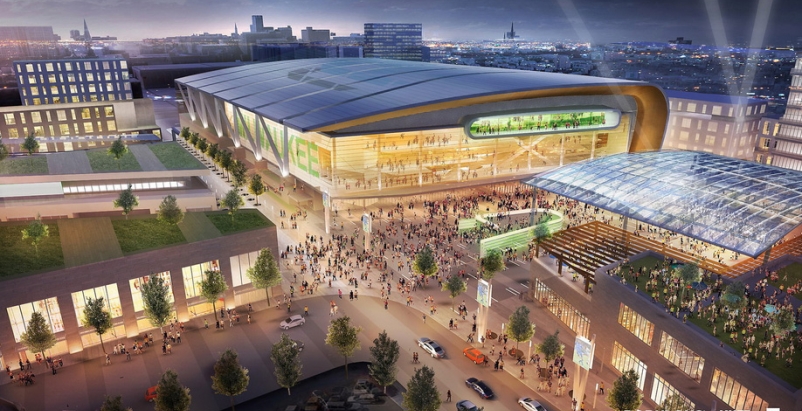

Related Stories
| Jul 2, 2014
Grimshaw's 'kit of parts' design scheme selected for Qatar sports facilities program
The series of projects, called the Al Farjan Recreational Sports Facilities, have been designed in such a way that the same basic design can be adapted to the specific requirements of each site.
| Jul 1, 2014
Sochi's 'kinetic façade' may steal the show at the Winter Olympics
The temporary pavilion for Russian telecom operator MegaFon will be wrapped with a massive digital "pin screen" that will morph into the shape of any face.
| Jun 30, 2014
Philip Johnson’s iconic World's Fair 'Tent of Tomorrow' to receive much needed restoration funding
A neglected Queens landmark that once reflected the "excitement and hopefulness" at the beginning of the Space Age may soon be restored.
| Jun 30, 2014
Research finds continued growth of design-build throughout United States
New research findings indicate that for the first time more than half of projects above $10 million are being completed through design-build project delivery.
| Jun 26, 2014
Plans for Britain’s newest landmark brings in international cooperation
Designers of the London Eye will team up with companies from France, the Netherlands and the United States to construct i360 Brighton, the U.K.'s newest observation tower.
| Jun 25, 2014
Frank Lloyd Wright’s Spring House, Cincinnati’s Union Terminal among 11 Most Endangered Historic Places for 2014
The National Trust for Historic Preservation released its annual list of 11 Most Endangered Historical Sites in the United States for 2014.
| Jun 20, 2014
Sterling Bay pulled on board for Chicago Old Main Post Office project
Sterling Bay Cos. and Bill Davies' International Property Developers North America partner up for a $500 million restoration of Chicago's Old Main Post Office
| Jun 18, 2014
Six World Cup stadiums have achieved LEED certification
In conjunction with the 2014 FIFA World Cup in Brazil, the U.S. Green Building Council (USGBC) announced that six World Cup stadiums have achieved LEED certification, including South America’s largest stadium, Maracanã in Rio de Janeiro.
| Jun 18, 2014
Arup uses 3D printing to fabricate one-of-a-kind structural steel components
The firm's research shows that 3D printing has the potential to reduce costs, cut waste, and slash the carbon footprint of the construction sector.
| Jun 16, 2014
6 U.S. cities at the forefront of innovation districts
A new Brookings Institution study records the emergence of “competitive places that are also cool spaces.”


